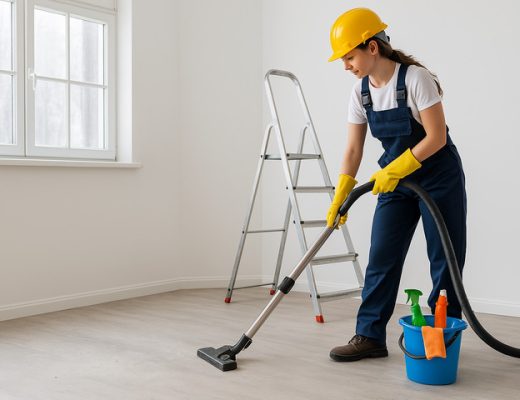Maintain Your White Couch with Best Tips
Have you ever wondered, “How did this mess get here so fast?” as you gazed at your once-pristine white couch? You’re not by yourself. White couches are unmistakably stylish and elegant-but trying to keep it clean? Quite a story. Sometimes you get mud paws splattered here; sometimes, there would be a coffee spill. And white upholstery tends to portray every flaw. But these should not deter you from owning a white couch or caring for one. With a good cleaning technique, your white couch will be alive again and shining bright. This guide takes you through easy, effective, and safe cleaning steps meant for every type of fabric, from linen to leather and all the way down.
1. Identify the Couch Materials
You should establish the fabric type of your white couch before beginning any Bond Cleaning Sunshine Coast process. The most popular materials for white couches include cotton, linen, microfiber, polyester blends, leather and faux leather. The different cleaning needs of these materials and their reactions to water and cleaning agents vary. The care label represents the best starting point because it exists underneath the cushions or it is sewn onto the couch’s frame. Each label includes a code which shows W (water-based) S (solvent-based cleaners), WS (water-based or solvent cleaners), or X (vacuum cleaning only). Your couch material type together with its care code gives you directions to choose a cleaning method which maintains fabric integrity against unintentional damage.
2. Vacuuming the Couch
The initial physical cleaning process begins with vacuuming every part of the couch. The brush attachment on your vacuum cleaner requires gentle motions to remove surface dust together with light dirt and pet hair and crumbs. The first concern should be the seams beneath the cushions followed by the areas that receive little attention. This step protects the fabric from additional dirt penetration during subsequent cleaning procedures. You should remove the cover from your couch then vacuum both sides before you proceed with laundering or performing deeper cleaning. The base step has delivered a clean working surface which prepares the fabric for spot or deep treatment. For more tips, you can also explore vacuum cleaning tips that help maintain furniture and fabrics.
3. Spot Cleaning of Localized Stains
White upholstery hates stains and quickly reveals them, so an instant reaction is essential in the case of a spill. The golden rule here is to blot, never donate to rubbing. If something spills, you want to take situations in your own hands: take a clean and dry cloth and place it on the liquid to absorb as much as possible without spreading out the area of the stain.
After the fine detail pre-treatment, use a mild solution of a few drops of dish soap in warm water to blot gently at the spot. For oil stains or oil-based marks, rubbing alcohol or a solvent cleaner would do better, as far as it is safe for your couch fabric. In all cases, blot with a moist clean cloth and dry immediately with a towel. Also, always do a test on a hollow-mountain somewhat hidden with the fabric to see if your cleaning solution will be okay or if it turns the fabric they use into an eyesore.
4. Deep Clean Entire Couch
Once the spots are dealt with, you may move to thoroughly clean the entire couch in order to bring the brightness back. In the case of fabric couch on which a code is marked with the description of W or WS, then you are in a position to make a mild solution using warm water and a little bit of mild detergent. Wet a soft cloth or sponge with the blend, then squeeze it out powerfully and clean the surface step by step. Wash the cloth regularly and rub it after with a fresh, damp cloth to eliminate any soapy mark.
In microfiber couches with an S, use a rubbing alcohol or commercial solvent instead. Spray it lightly then rub it with a soft brush; allow to dry by air. On leather or faux leather a mixture of white vinegar and water or a special leather cleaner would do the trick. Use a cloth to wipe it and apply a conditioner to keep the finish.5. Allow It to Air Dry
5. Allow It to Air Dry
Wet after cleaning? The couch’s drying time can be quite long. Do not use any heat source, especially a hair drier, or put it into the sun to dry as it might shrink or discolour the fabric. When you put dry towels on wet areas, it may become able to soak a few drops of moisture. All should be completely dry, even the cushions, to prevent mould or funky smells and then restored.
6. Preventive Action
The second option is to prevent stains, in other words, protect white furniture in particular. Spraying a fabric protector is one of the effective measures since it will prevent future spillage since it will not stick. In case they are removable covers, use washable slipcovers which can be washed frequently. You should turn the cushions occasionally to avoid the areas of excessive usage and sunlight-fading. In case possible, keep food, drinks and pets out, and vacuum at least once a week, so that the dirt does not settle into the fabric.
7. Speaking of eliminating the Odour
As the white couch starts aging, it may begin to adopt the smell of food, pets, or overall utilisation. The natural way is using baking soda. Put liberally over the surface and allow 20-30 minutes so that the odour can be absorbed. Then wash with a vacuum. In case you would like it to smell fresher, a diluted mixture of white vinegar and water should be misted. Avoid saturating the fabric as you will damage it; be very careful and do a test before using it. This last measure makes your couch smell fresh and able to look clean.
8. When to Call a Specialist
There are sofas that require the special treatment and the equivalent of taking care of them is a big challenge. Any annoyance of tough stains, odor removal, or shall we say fragile material like silk or wool, now is the time to bring out the big guns, someone who works in upholstery. They apply instruments and things that are meant to penetrate through the grime without, therefore, damaging the textile. In addition, an annual Professional cleaning will lead to prolonging the life of the couch and preserving its appearance even in case it does not really appear messy.
Wrapping Up
White couches are pretty and require maintenance. When cleaned regularly, stains taken care of immediately, and the preventive measures put in place, a white couch will always look clean and trendy and ready to be the centrepiece of anybody’s home.



